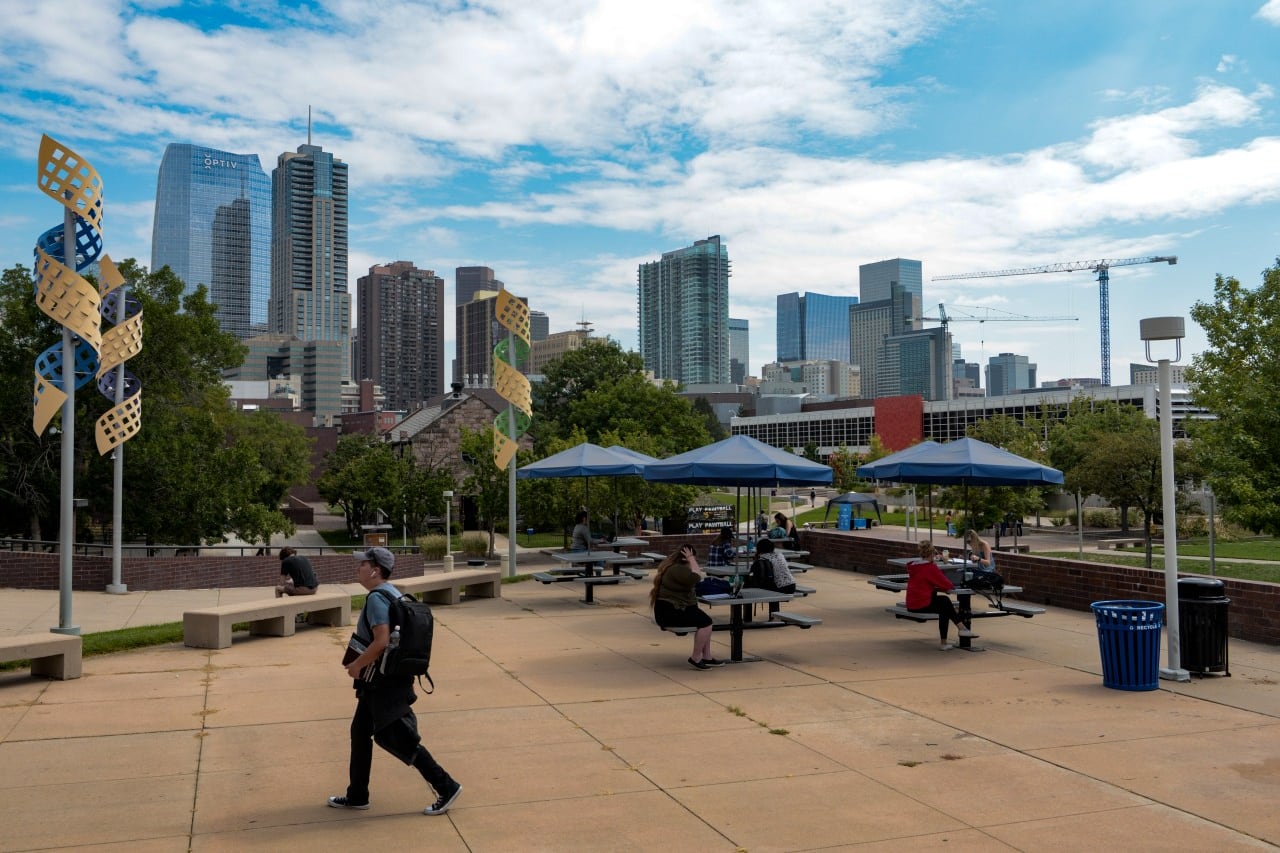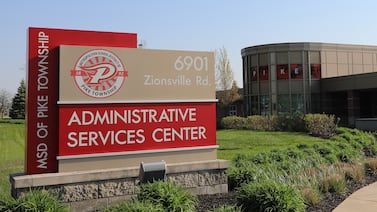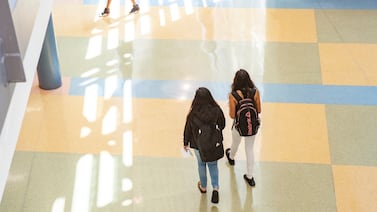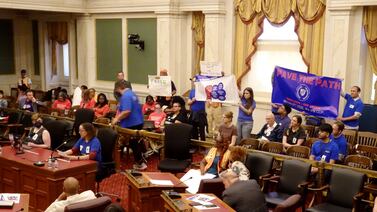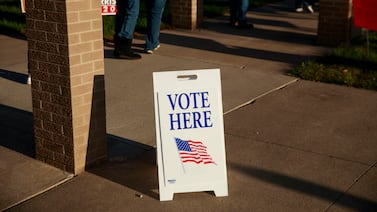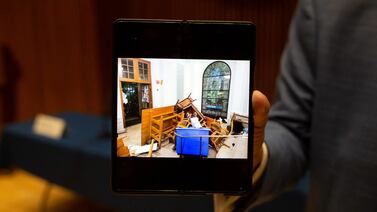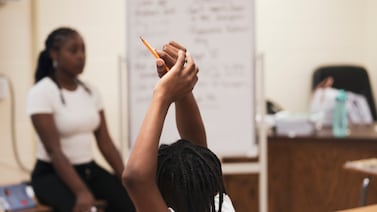For the first time since the start of the pandemic, enrollment at the majority of Colorado community colleges increased slightly from the previous year.
But that increase is driven largely by high school students taking courses for college credit, while enrollment for working-age adults remains well below pre-pandemic levels. Overall enrollment still has a long way to go before it returns to 2019 levels.
Colorado Community College System numbers from the first week of September show an almost 3% increase. All but five of the state’s community colleges saw more students on campus. Two others saw very small declines.
Community college leaders say that’s a positive after efforts to attract students back to campus.
Pueblo Community College President Patricia Erjavec said students are starting to show back up, and her school also has helped students stay in college once they started. Enrollment at the start of the fall semester has so far increased a modest 1.3% this year over last, or up to about 4,700 students.
“We’re really hoping that over the course of the next few semesters we can continue to make gains,” she said. She wants enrollment to rebound to 5,000 students, matching 2019-20 numbers.
Nonetheless, Landon Pirius, the system’s academic affairs vice chancellor, said positivity is tempered by the reality that students still aren’t showing up in the same way as before the pandemic and after previous recessions where enrollment spiked.
High school college-level class enrollment is up overall by 18%, or 3,540 more students from last year’s 19,449. Pirius said those numbers were expected to rebound once schools fully returned to in-person instruction.
Offsetting those numbers slightly are big dips in adults aged 21 to 39. In total, the system is down another 1,300 adults in that age range. Last year, about 28,000 students aged 21-39 enrolled within the system.
The next few years could continue to pose an uphill battle attracting adults. Previous trends show students don’t enroll during strong job markets. Right now, many prospective students are making more money at entry-level jobs than ever before.
Pirius said he worries persistent enrollment declines could trigger cuts in state funding support — and, in turn, the level of service the system can provide or the overall cost to students.
The state weighs funding based on a three-year average, Pirius said, and for the last couple of years, the schools have relied on federal pandemic relief money to help offset enrollment dips. Those funds are limited and will run out.
“We’re serving mostly an underrepresented population,” Pirius said. “It is a worry that if we get less money, we can serve fewer people. And that makes us less ready to serve students from the communities we traditionally serve when we do see an influx.”
Meanwhile, a few universities, such as the University of Colorado Boulder, have more students on campus.
Pirius emphasized that the state and community college system has efforts underway that could make a difference for students and for enrollment overall.
The state expanded Finish What You Started to help get the 700,000 students across the state with some college but no degree back onto campus. Colorado also will offer free short-term training to aspiring healthcare professionals using federal funding. Pirius hopes those students then take back the message of the importance of college and the help the schools can offer to their communities.
And next year, the state’s rural colleges will also expand program offerings to students across the state through online courses.
Erjavec said the support students get, especially financially, helps them get onto campus and stay. It’s part of the reason why Pueblo has seen its slight increase.
Programs such as Pueblo’s Return to Earn, the basis for Finish What You Started, have gotten hundreds of college dropouts back on campus. The college also sends letters of support to students who just graduated high school, telling them they’re automatically accepted with a $1,000 scholarship, she said. The school also helps with life needs, such as food, clothing, or day care.
“We try to embrace our students,” Erjavec said, “and make sure that we capture every person that is interested in getting a degree or certificate.”
Jason Gonzales is a reporter covering higher education and the Colorado legislature. Chalkbeat Colorado partners with Open Campus on higher education coverage. Contact Jason at jgonzales@chalkbeat.org.


